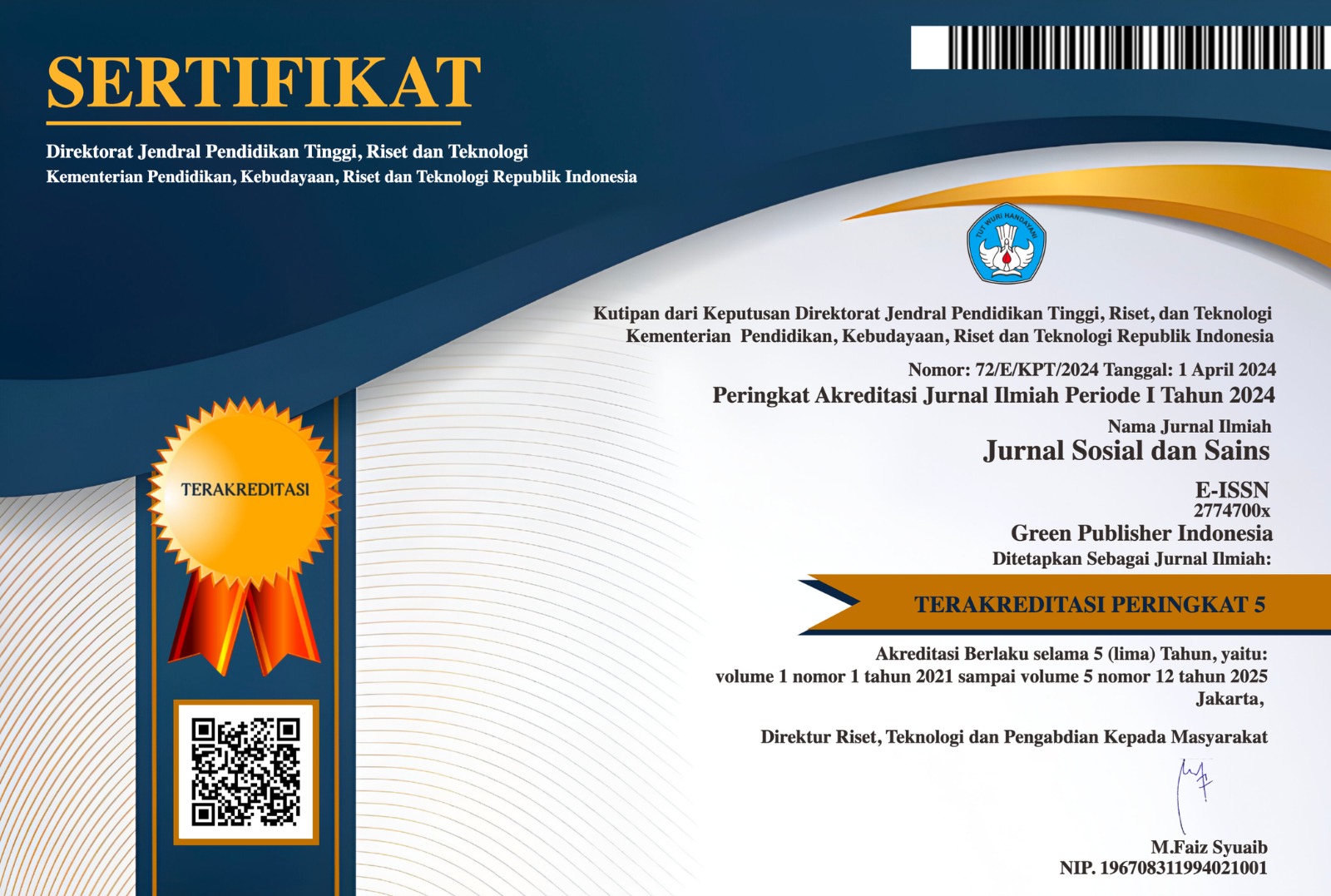The Influence Of Return On Assets (ROA), Current Ratio (CR), and Debt-to-Equity Ratio (DER) On Stock Prices at PT. Unilever Indonesia Tbk Period 2014-2023
DOI:
https://doi.org/10.59188/jurnalsosains.v5i2.31957Keywords:
Return On Assets (ROA), Current Ratio (CR), Debt to Equity Ratio (DER), Share PriceAbstract
The capital market plays a crucial role in economic growth, serving as a platform for investors and companies to engage in financial transactions. One of the key factors investors consider when making investment decisions is stock price movement, which various financial ratios can influence. This study examines the effect of Return on Assets (ROA), Current Ratio (CR), and debt-to-equity ratio (DER) on stock prices at PT. Unilever Indonesia Tbk over the period 2014-2023. This research employs a quantitative method with a descriptive and verification approach, utilizing secondary data from the company's financial reports and stock price data from the Indonesia Stock Exchange (IDX). The purposive sampling method was used to select data, and analysis was conducted using multiple linear regression. The study also conducted classical assumption tests, including normality, heteroscedasticity, multicollinearity, and autocorrelation tests, to ensure the validity of the results. The findings reveal that ROA, CR, and DER do not significantly affect stock prices, either partially or simultaneously. This contradicts several previous studies that suggested a strong correlation between financial ratios and stock prices. The results indicate that stock price fluctuations at PT. Macroeconomic conditions, market sentiment, and external shocks may influence Unilever Indonesia Tbk. In conclusion, this study suggests that investors should consider additional factors beyond financial ratios when investing in the Fast Moving Consumer Goods (FMCG) sector. Future research should explore the impact of external factors, including inflation, interest rates, and industry trends, on stock price movements.
Published
How to Cite
Issue
Section
License
Copyright (c) 2025 Ujang Juanda, Yoyo Sudaryo, Mochammad Mukti Ali

This work is licensed under a Creative Commons Attribution-ShareAlike 4.0 International License.
Authors who publish with this journal agree to the following terms:
- Authors retain copyright and grant the journal right of first publication with the work simultaneously licensed under a Creative Commons Attribution-ShareAlike 4.0 International (CC-BY-SA). that allows others to share the work with an acknowledgement of the work's authorship and initial publication in this journal.
- Authors are able to enter into separate, additional contractual arrangements for the non-exclusive distribution of the journal's published version of the work (e.g., post it to an institutional repository or publish it in a book), with an acknowledgement of its initial publication in this journal.
- Authors are permitted and encouraged to post their work online (e.g., in institutional repositories or on their website) prior to and during the submission process, as it can lead to productive exchanges, as well as earlier and greater citation of published work.








